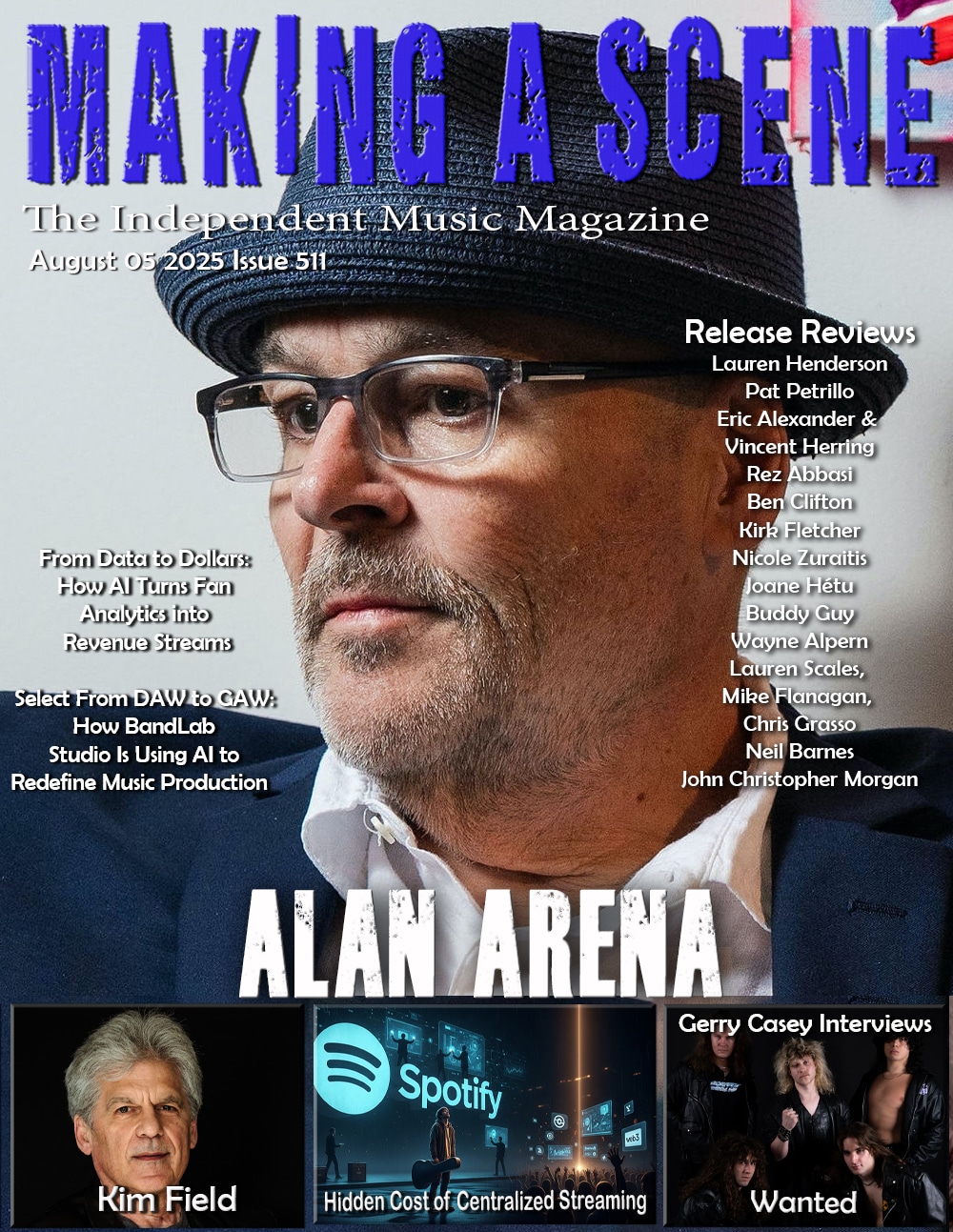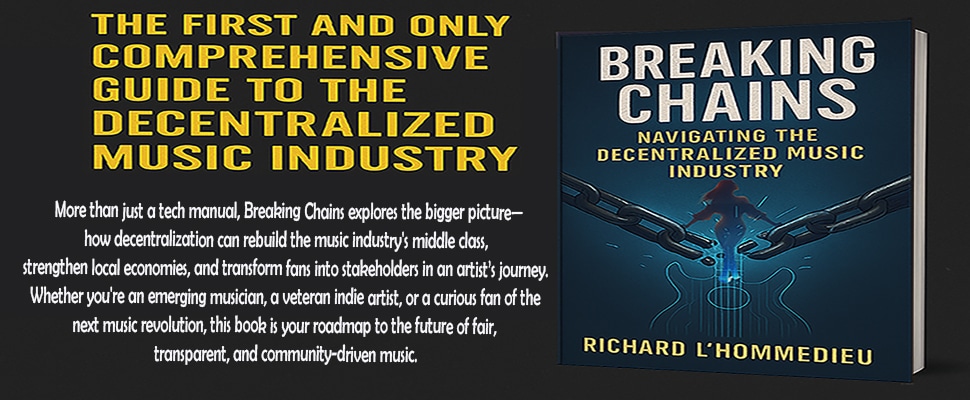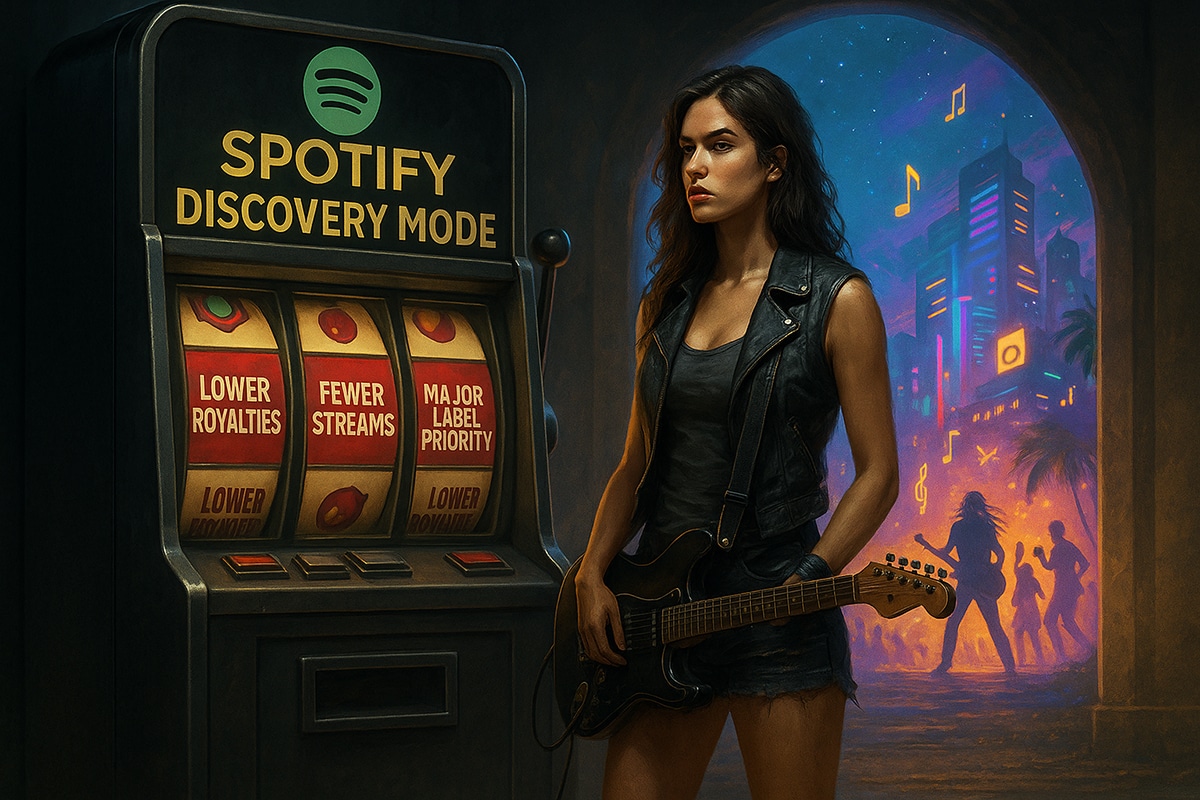Spotify’s Discovery Mode: The New Payola Hurting Indie Artists
Making a Scene Presents – Spotify’s Discovery Mode: The New Payola Hurting Indie Artists
In the early days of the music industry, the word “payola” was practically a scandal. It referred to the shady practice of record labels secretly paying radio DJs to play their artists’ songs, manipulating what listeners heard and artificially inflating a track’s popularity. It was unethical, it was illegal, and it was supposed to be a thing of the past.
Fast forward to today’s streaming-dominated music landscape, and the rules have changed but the game? Not so much. Instead of slipping cash under the table to DJs, major corporations have found slicker, more “legitimate” ways to game the system. Enter Spotify’s Discovery Mode, a shiny new tool that sounds like a marketing boost but operates dangerously close to the old-school payola playbook — and indie artists are paying the price, literally.
What Is Discovery Mode?
At its core, Spotify’s Discovery Mode offers artists and labels a simple (and seductive) deal: in exchange for agreeing to a lower royalty rate, your song will get a boost in the platform’s recommendation algorithms. That means it’s more likely to show up in playlists like “Radio” and “Autoplay” after a user finishes a song.
On the surface, it sounds like a dream for artists struggling to get noticed. More exposure, more chances for new fans, right? But scratch a little deeper and the reality is far less romantic, especially for independent musicians who already fight an uphill battle to make a living off their recorded music.
How Discovery Mode Mirrors Payola
When you boil it down, Discovery Mode isn’t much different from the shady practices of the past. It’s just updated for the streaming era. Instead of paying upfront to have their song played, artists and labels are giving up a piece of their already tiny streaming income agreeing to earn less money per stream in exchange for more visibility.
This creates a vicious cycle: if an indie artist doesn’t opt into Discovery Mode, their song is less likely to be surfaced by the algorithm compared to those who do. And if they do participate, they are forced to accept even lower payouts in an environment where fractions of a cent already separate success from starvation.
Major labels, flush with cash and strategic marketing budgets, can afford to treat Discovery Mode like just another line item in their massive promotional arsenals. They can flood Spotify’s algorithms with artists who already have resources and recognition, pushing independent musicians further into the shadows.
In effect, Spotify’s Discovery Mode becomes a pay-to-play scheme, where exposure isn’t about artistic merit or audience connection it’s about how much income you’re willing to sacrifice to stay visible.
Why This Hurts Indie Artists the Most
For independent musicians, every stream counts. Even under the best conditions, the payout per Spotify stream is notoriously low averaging around $0.003 to $0.005 per play. After distributor cuts, taxes, and other fees, an indie artist needs hundreds of thousands or even millions of streams just to make a modest living wage.
When Discovery Mode lowers the royalty rate further, it robs artists of even more income. And unlike major-label artists, indie musicians usually don’t have a massive marketing machine behind them to convert that algorithmic exposure into sustainable fanbases, merch sales, touring opportunities, or sync deals.
Instead, they find themselves trapped in a cruel economy: give up more of your earnings just to keep your song afloat in the recommendation engine or risk becoming invisible altogether.
The Hypocrisy of “Listener-Driven” Algorithms
One of Spotify’s favorite lines when defending its platform is that the music people hear is based on “listener preferences,” not corporate manipulation. They claim the algorithm is neutral that it simply reflects what users like and respond to.
But Discovery Mode shatters that illusion.
If an artist agrees to lower their royalty rate, their song gets a preferential boost in the algorithm regardless of whether listeners organically chose it in the first place. Discovery Mode artificially promotes tracks that paid the price, while songs that might genuinely resonate more with listeners are buried if they don’t opt in.
This shows that Spotify’s algorithms aren’t purely “listener-driven.” They are corporate-driven. They’re designed to prioritize songs that serve Spotify’s bottom line, not necessarily the songs listeners would have naturally chosen if given a fair shot.
It’s the same manipulation that traditional radio once engaged in during the payola era only now it’s hidden behind a friendly, user-friendly interface and the misleading promise of “fairness.”
By manipulating the recommendation engine in favor of Discovery Mode participants, Spotify quietly reinforces a system where money talks louder than music. It’s not about giving listeners what they want; it’s about squeezing the maximum profit from both the artists and the audience.
And indie musicians those who can’t afford to endlessly lower their streaming royalties are the ones left paying the real cost.
The Bigger Problem: Platform Power Over Art
Discovery Mode is just another example of how tech platforms like Spotify have reshaped music into a numbers game, where artists are forced to play by opaque rules just to survive. It’s not about building a career anymore it’s about constantly feeding the algorithm, often at the expense of long-term financial and artistic stability.
The more Spotify pushes models like Discovery Mode, the more they tilt the playing field in favor of those who already have the resources to game it. True indie creativity, already devalued by low streaming payouts, is now being squeezed even harder.
Worse yet, listeners often have no idea that the music they are hearing isn’t being surfaced because it’s the best song it’s being surfaced because someone took a pay cut to make sure it popped up in the autoplay queue.
This erosion of trust — between artists, listeners, and platforms damages the whole ecosystem of music. It transforms what should be an open, discovery-driven landscape into yet another paywalled garden where money, not talent, drives opportunity.
How the Decentralized Music Industry Can Solve These Problems
The rise of blockchain technology and decentralized platforms offers a real alternative to the exploitative models that companies like Spotify have normalized. A decentralized music industry could flip the script by removing the middlemen who control payouts, discovery, and artist exposure.
First, decentralized streaming platforms built on blockchain operate with transparent smart contracts. This means artists are paid directly and fairly for every listen, with no mysterious algorithms shaving off percentages behind closed doors. There’s no “Discovery Mode” tax where exposure comes at the price of royalties. Instead, platforms like Audius, Emanate, and others allow artists to set their own rates and retain a far larger share of the revenue their music generates.
Second, decentralization gives artists full control over their audience relationships. In Web3 environments, musicians can directly engage their fans without needing permission from a platform. They can issue NFTs tied to albums, live shows, or exclusive content, creating new income streams that go straight to the artist not through layers of corporate hands.
Third, decentralized discovery mechanisms are community-driven, not algorithm-driven. Instead of paying for placement or submitting to a secret formula, artists gain visibility through reputation, fan engagement, and community voting. Music thrives based on merit, authenticity, and real connections, not on backroom deals or hidden financial compromises.
Finally, decentralized systems create real accountability. Every transaction, play, and payout is recorded transparently on a public ledger. There’s no mystery about how much a song earned, no back-end manipulation to favor one label over another, and no need to sacrifice royalties for the hope of exposure.
For indie artists, this shift isn’t just about making a living it’s about reclaiming autonomy. It’s about building a music economy where creativity, fairness, and fan connection matter more than corporate profits and predatory algorithms.
The decentralized music revolution is still young, but it’s already proving that a better way is possible. One where indie artists don’t have to choose between their income and their visibility. One where music can once again be about art, not exploitation.
The Time to Act Is Now
Spotify’s Discovery Mode may dress itself up as a tool for indie artists, but at its core, it’s just another way to take more money out of musicians’ pockets while tightening corporate control over music discovery.
It doesn’t have to stay this way. Artists and fans alike have the power to push for change by supporting decentralized platforms, by valuing transparency, and by demanding that music remains a space for creativity — not just a data-driven cash grab.
If you’re an artist, explore decentralized streaming. If you’re a fan, seek out artists who are building outside the system. Share their work. Support them directly. Choose platforms that put musicians first.
The future of music is ours to build and it won’t be found inside the broken systems of the past. It’s time to break the cycle, reclaim our art, and shape a music industry where everyone can thrive not just survive.
Discover more from Making A Scene!
Subscribe to get the latest posts sent to your email.











